The new Skopje, the one that was rebranded after 2010 is of little interest to me. As many of my Macedonian friends put it, it is very un-Macedonian. While Alexander the Great’s statues may populate the streets of Skopje today, a much more relevant figure, Josip Broz Tito, is very difficult to get a hold of. However, there being few statues of him hardly matters. His fingerprints are all over the city. The Yugoslav project to redevelop Skopje after the terrible earthquake of 1963 means that the city today, despite its late government’s attempts, is a visibly Yugoslav city. In other terms, it looks much like Belgrade, not Thessaly. Brutalist gems can be found all around the city, some even predating 1963. Join me, as we visit some of the best pieces of brutalist architecture Skopje has to offer today.

The Monument to Partisan Munitions Factory is located where said factory was once located. Now this area is used as the backyard of the city’s youth center, which is why it was hardly in the best position for a photograph. While it is not a brutalist building per se, it does work as an entry point into all the goodies to come!
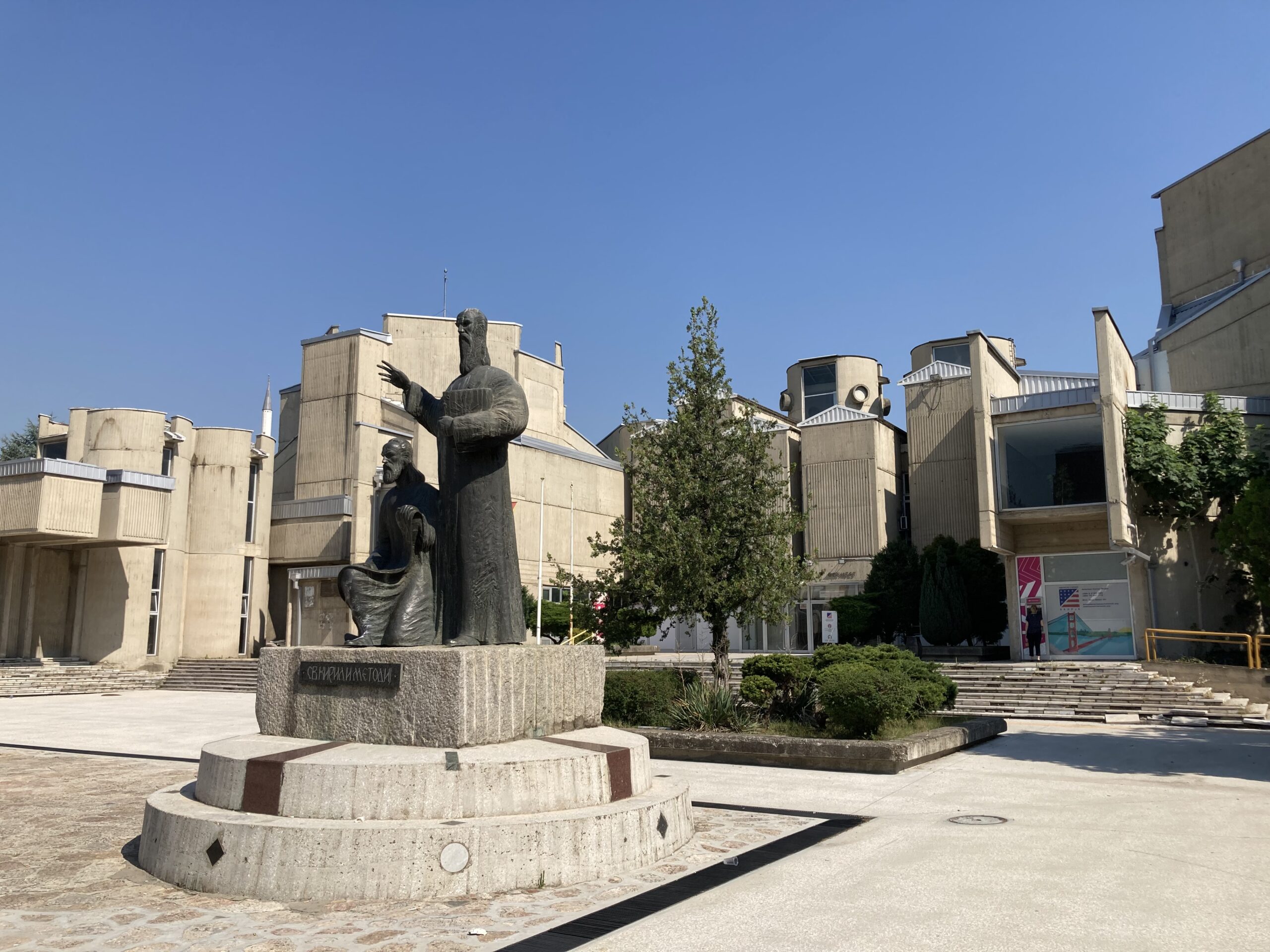
While some factories were closed in due time, the university, thankfully, did not share the same fate after the dissolution of Yugoslavia. Other than being a rather important tertiary education center for the country, Ss. Cyril and Methodius University in Skopje today also works as an amazing park of sorts for those who adore brutalist architecture.
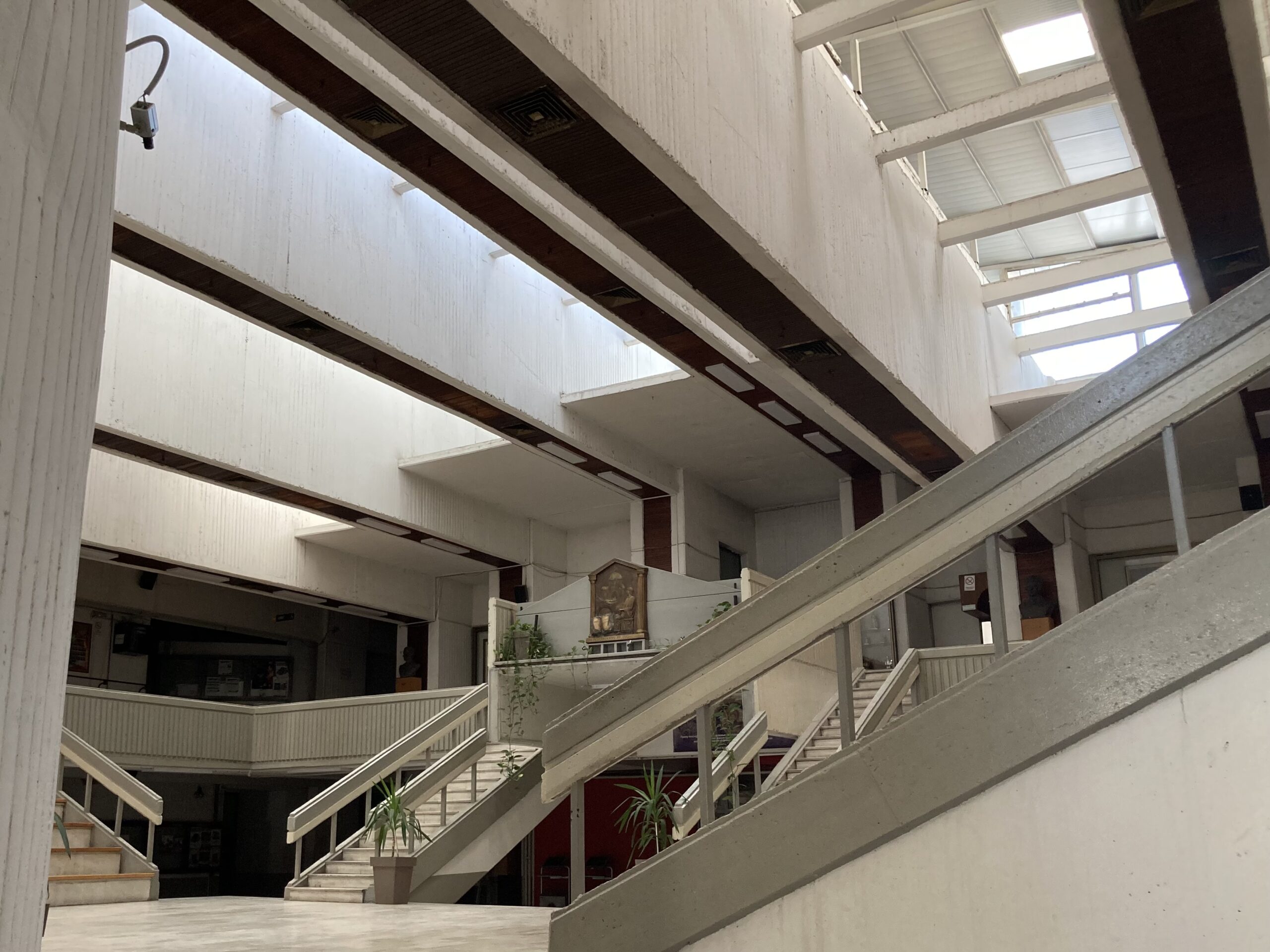
Though all the buildings and even the dormitories owe something to certain brutalist architects of Yugoslavia, it is really the interior of this university’s many faculties that take you back to a completely different era. I could not help but feel a bit jealous of the students studying here.
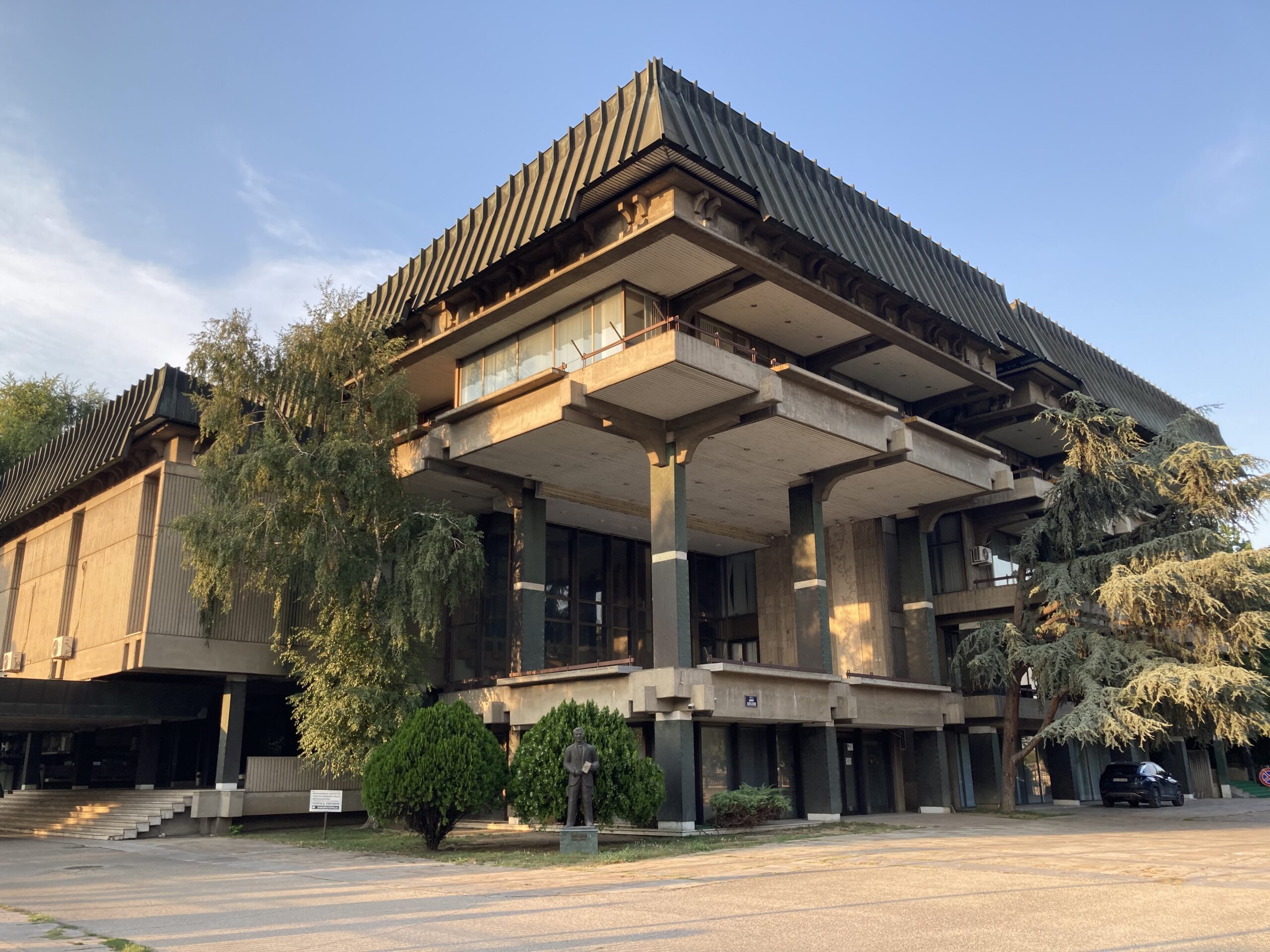
Yet another academic building that has an exceptional architecture to gaze at is the Macedonian Academy of Sciences and Arts. I was not sure if pesky travellers like me were allowed in, and I was running out of time, so this time I was satisfied with the exterior alone.

When one leaves the Macedonian Academy of Sciences and Arts through the bridge that leads to the southern part of the city, they can see the offices of Macedonian Radio Television in the distance. While this building too is a brutalist gem, it has seen much better days. The lack of funding towards keeping it intact is so clear that even its Google Maps reviews are full of locals and foreigners alike writing about how poorly kept the area and the building is.
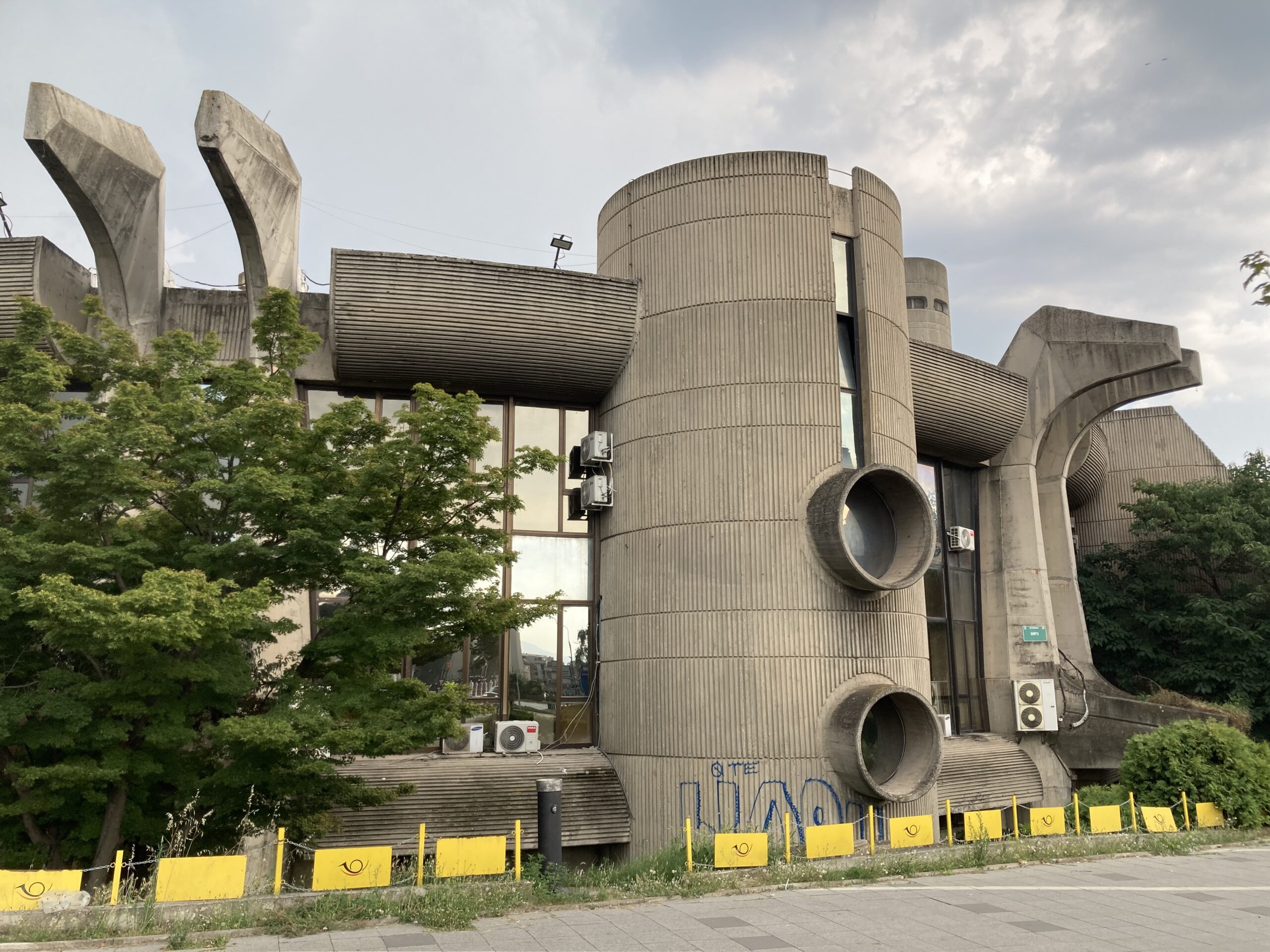
Thankfully, that is less of an issue for the much better kept and dare I say better looking Central Post Office of Skopje. You will likely run into this building a couple of times during your stay in the city, as it seems to be on the way between a few tourist attractions and some of the best eateries in town.
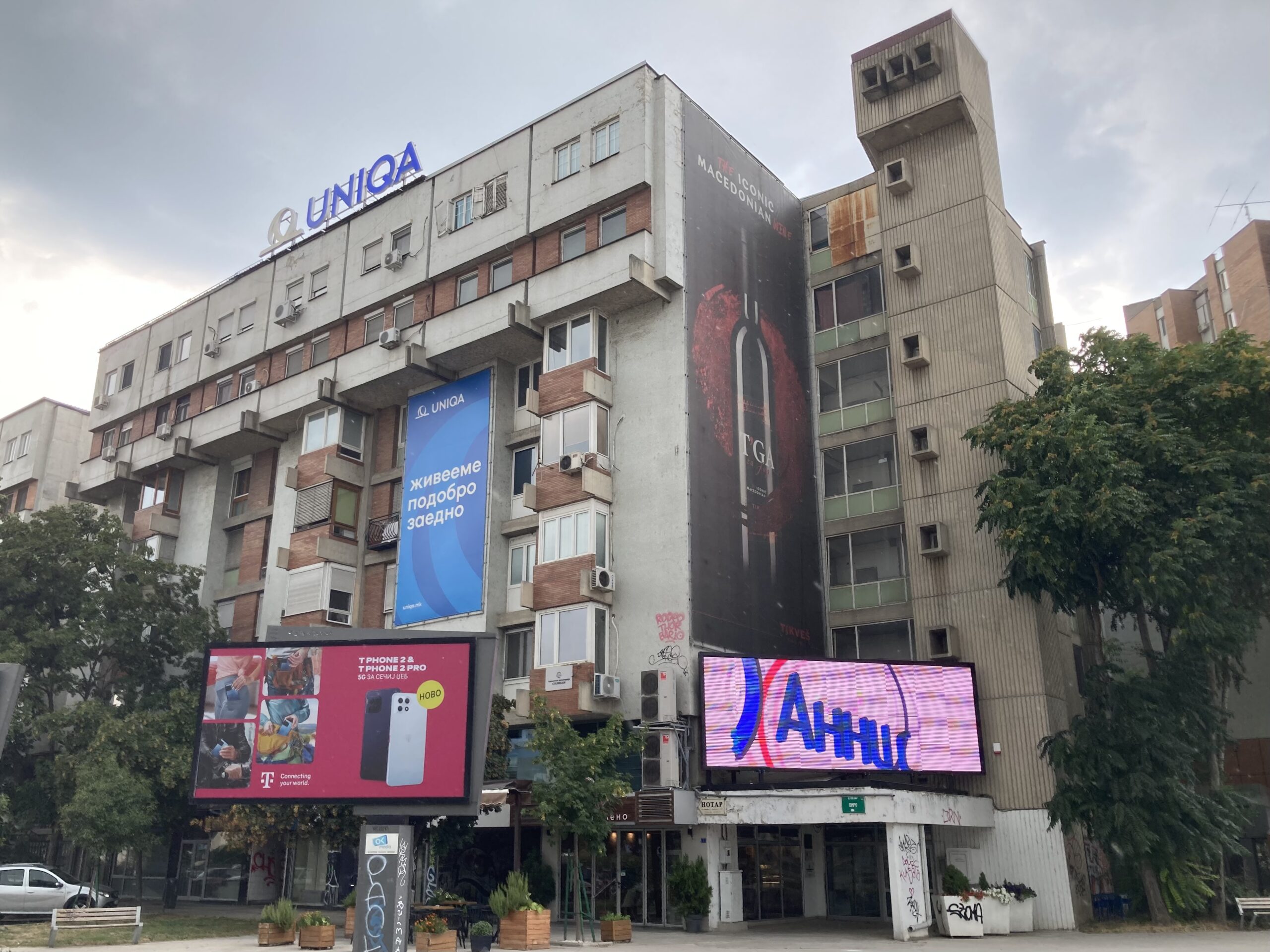
While such brutalist landmarks are already plentiful in Macedonia’s capital, one must not forget all the simpler brutalist details that they can find all around the city. At times, even an elevator shaft may surprise you, especially when you are not even sure if that thing was meant for elevators or not…
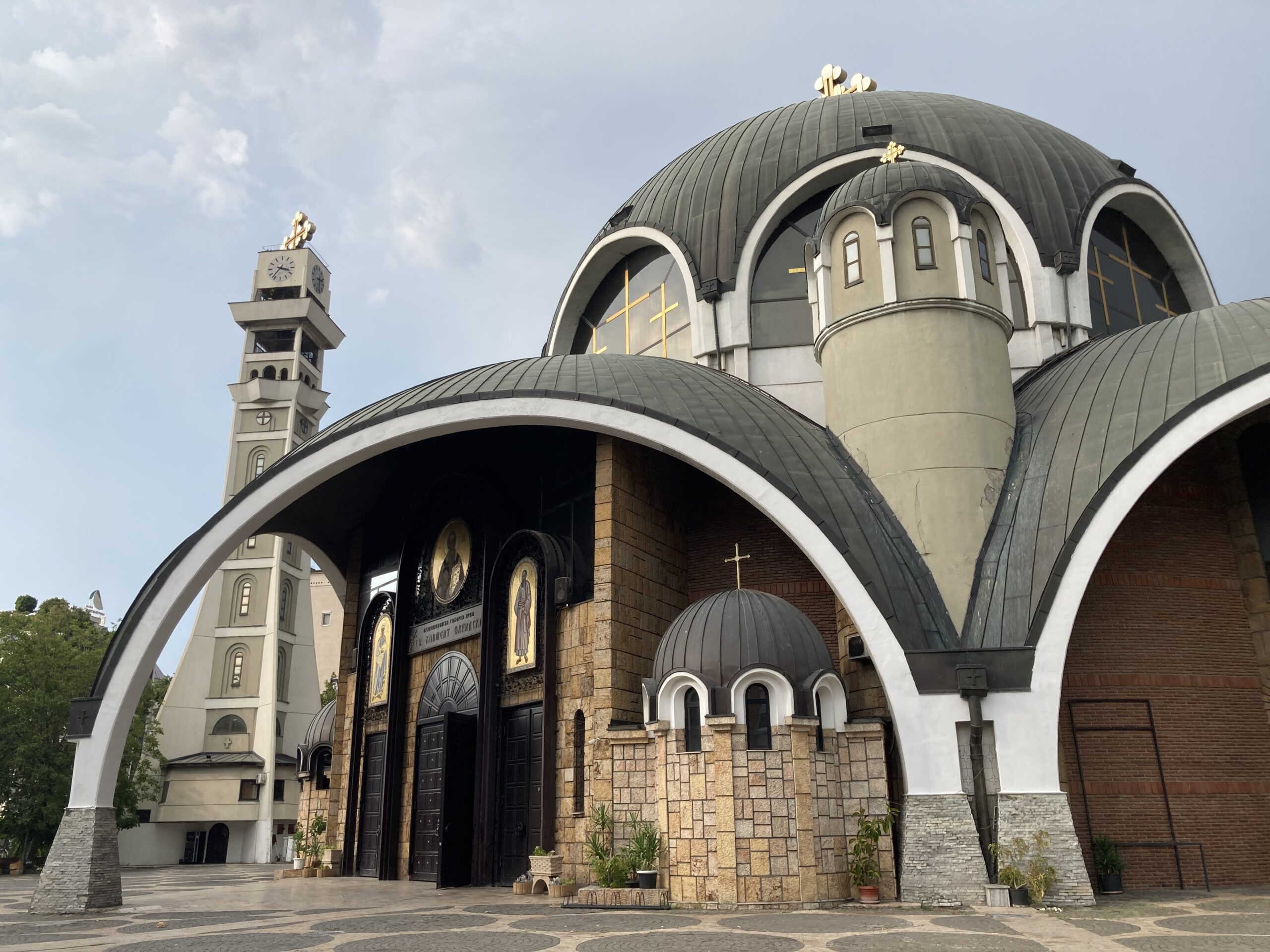
Now, let me be clear here. I am no art historian, and I am not so sure if this is a brutalist piece or not. In fact, I am pretty sure it is not. However, I would not imagine seeing such a unique and may I add quirky church anywhere else in the world. It does not look out of its place in Skopje, which is why I added it in this list. It is too ornate and clean for a brutalist building, but I cannot help but think that its architect had a bit of influence from brutalist gems of his time period, as he did grow up, study, and worked in the once socialist Yugoslavia.
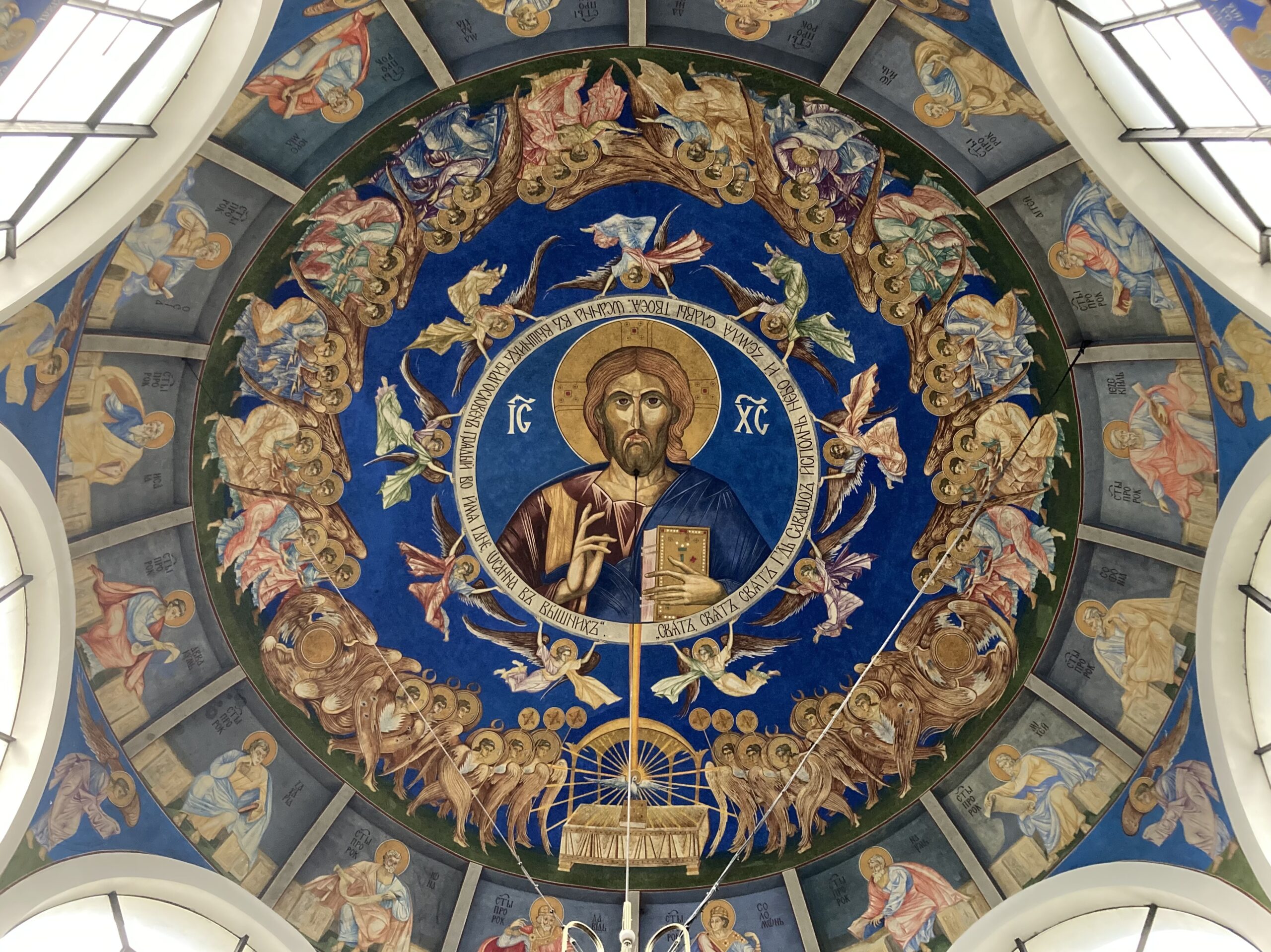
However, whatever one may think about its style, anything brutalist simply evaporates when one makes their way into the Saint Clement of Ohrid Church. This is a church, there is no mistake about that. It is not some bizarre socialist church, it is not a brutalist church, it is a proper church inside. It is, however, a beautiful church, one you should prioritize in your itinerary.
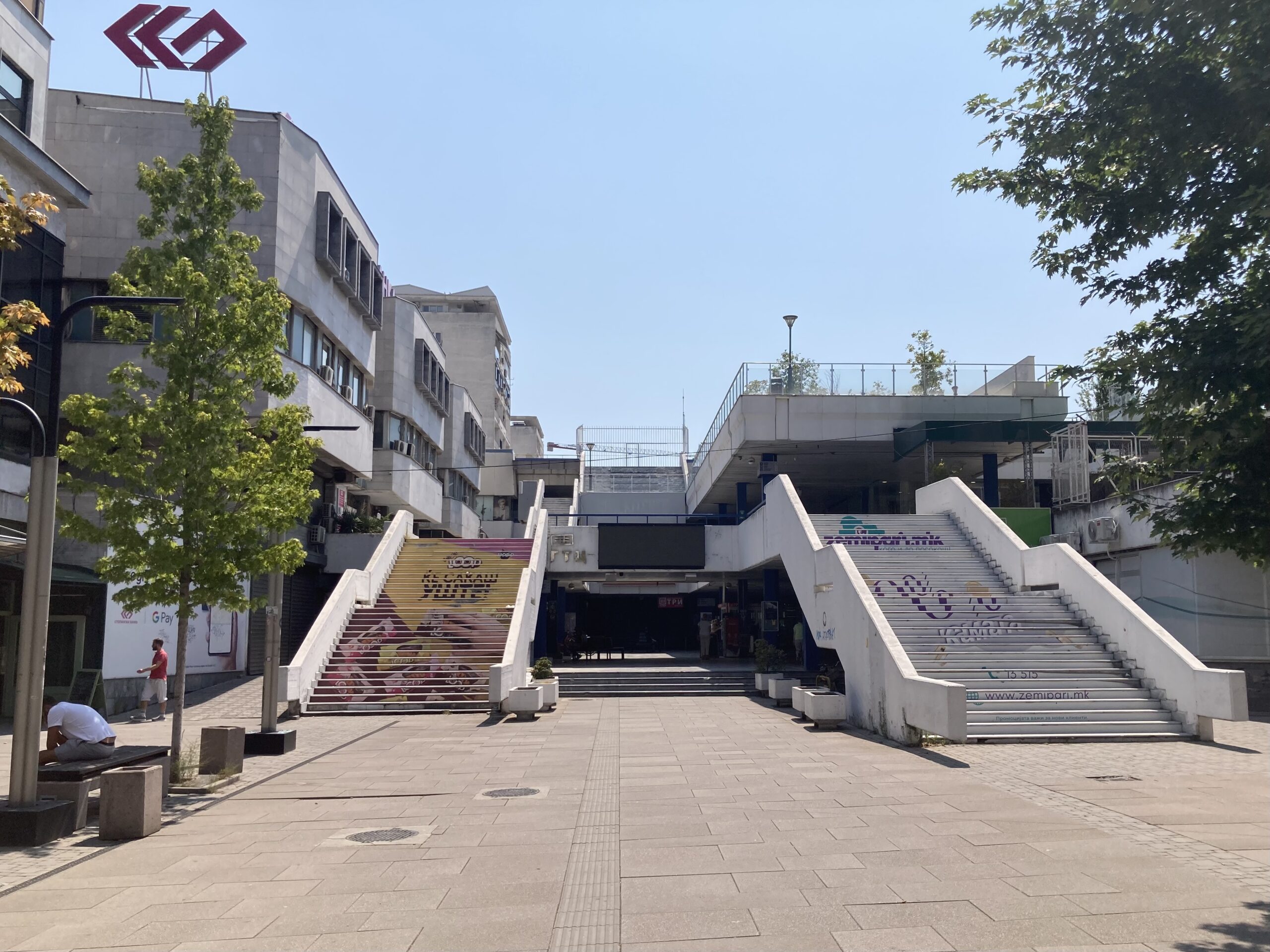
While it was impossible to get a decent photograph of this massive complex from inside, Skopje’s City Trade Center is yet another one of its brutalist highlights. It is extremely practical in its design, working like an open mall of sorts. I am not sure how they keep this place heated during winter, or whether they even try to do that, but it is definitely an interesting concept, being somewhere in between an actual mall and a pedestrian street.
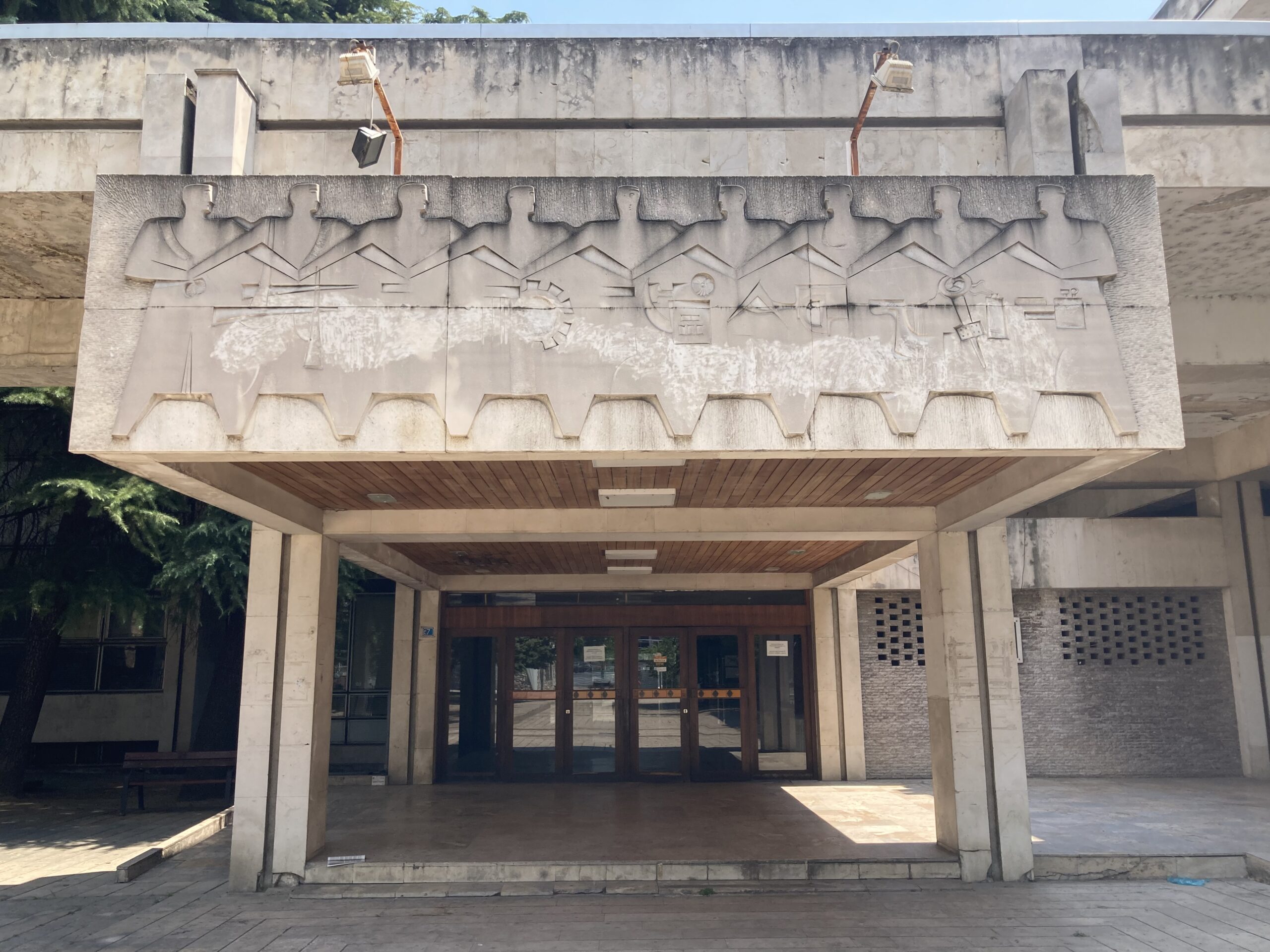
While their numbers are dwindling by the day, you can still find a few socialist reliefs around Skopje as well, though no mosaics. If you go behind the Mother Theresa Memorial House, you can come across this particular piece of artwork on a state department. It seems to suggest a partnership or perhaps a division of labour between different professions, but I am not so sure about the details.
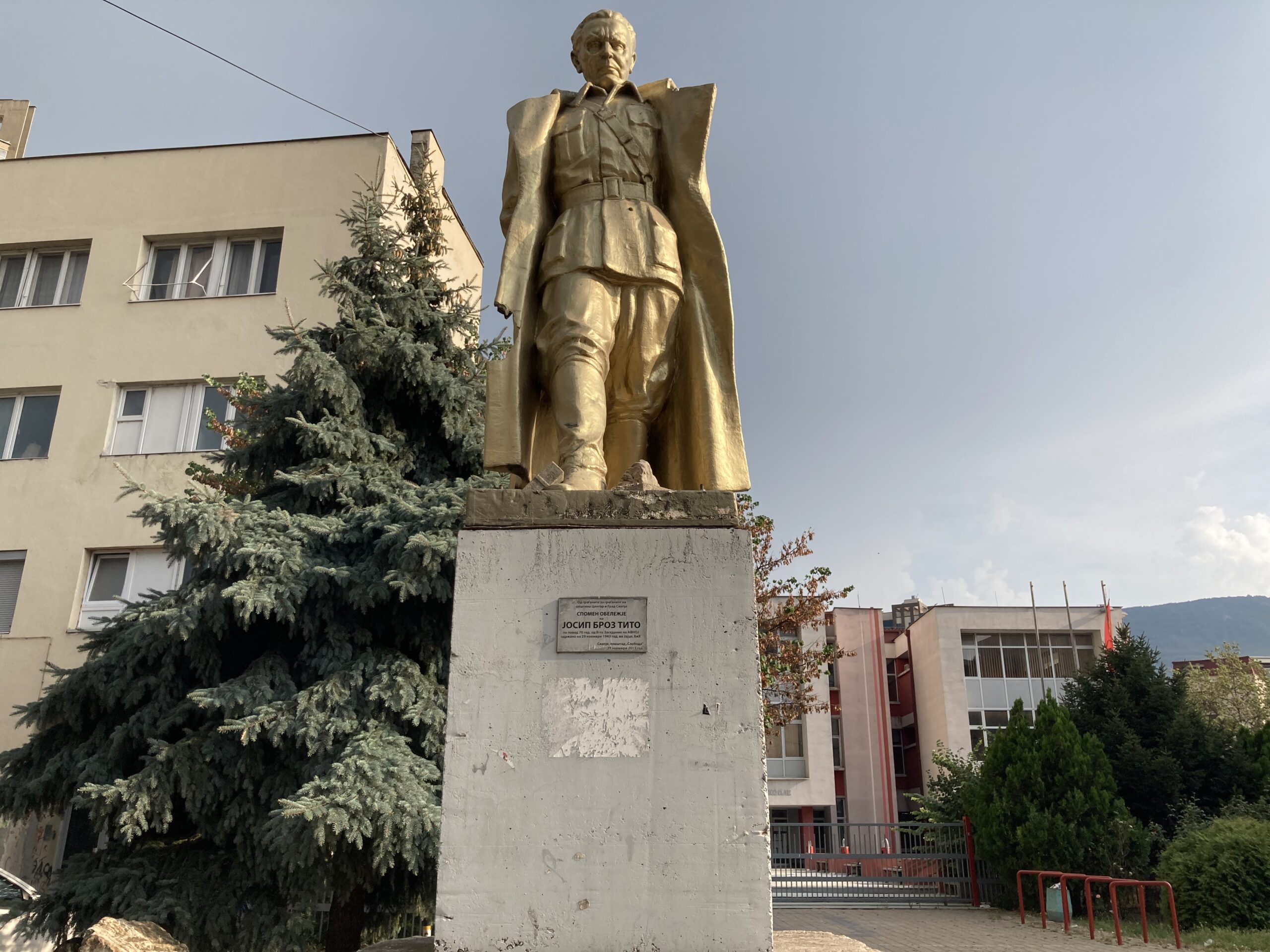
Well, let us end this little slideshow of an article with a look at the man who had a rather sizeable impact on Macedonia today, and was somewhat responsible for all the buildings we have seen so far. While his new statue is not as glamorous as the others found around the city, it is a nice little testament to the fact that he is hardly forgotten by the locals. Allegedly one can find flowers in front of this statue regularly, though that was not the case when I visited it myself.
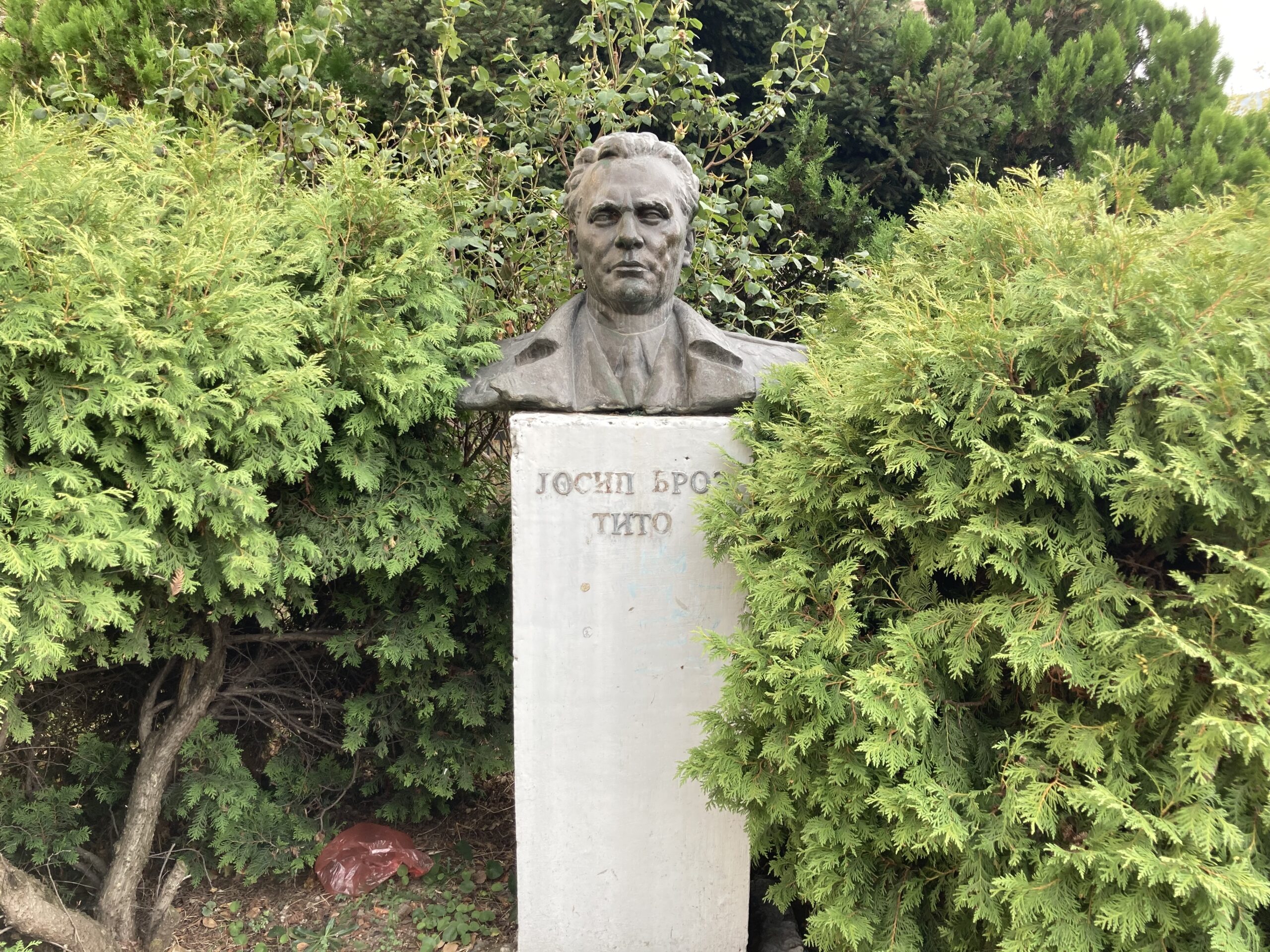
Interestingly, an older and much better Tito statue can be seen just behind this more recent one. While both statues are technically right in front of Josip Broz Tito High School, this older one is almost hidden in between some shrubs. In any case, they are both worth a quick look, though they have both seen better days.
Well, while Skopje’s museums were lacklustre at best (as you will see next week), and its rebranding starting by 2010 leaves a bad taste in one’s mouth (as you may have read last week), visiting these brutalist (and some not so brutalist) architectural gems is definitely one of the highlights of my trip to this rather quirky capital. It can certainly spice up your travels in the region as well.
